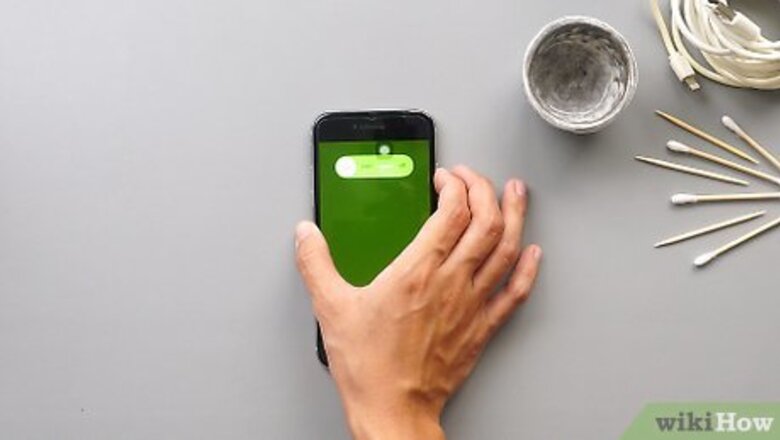
views
- Always make sure your phone is powered off before cleaning.
- Use compressed air to gently spray the port with quick bursts.
- Use a sharp object such as a toothpick or push pin to scrape debris from the port walls.
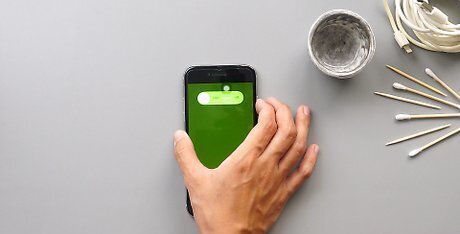
Power down your iPhone or iPad. To do this, press and hold the power button that's on either the top or side edge, and then drag the on-screen slider to the Off position. You can also take this opportunity to clean your phone case or phone speaker.
Shine a flashlight into the Lightning port. You'll usually be able to spot a blockage with the right lighting. Closely inspect the walls inside of the port. If there's a layer of gunky buildup around the edges, it could prevent the charging cable from making proper contact with the inside pins.
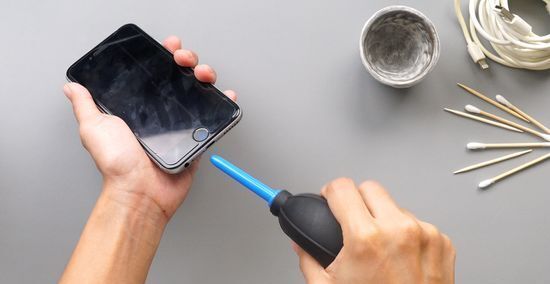
Spray the port with quick bursts of compressed air. A can of compressed air is often enough to free looser particles (such as dust, pet fur, or lint) from the port. Use short, light bursts rather than one lengthy spray. Use your flashlight to re-inspect the port. If you no longer see debris, give the port 2 to 3 minutes to dry before attempting to charge your iPhone or iPad.
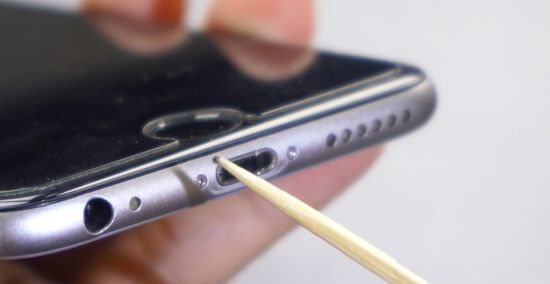
Scrape the walls of the port with a toothpick. If the port is clogged with dust or lint clumps, a quick gentle swipe or two should free the trapped particles. If there's a layer of gunk or grime caked along the walls, gently scrape around the edges to dislodge it. If you don't have a toothpick, you can use another thin, sharp object such as a safety pin or push pin. The Lightning port is filled with many small electronic pins—too rough of a scrape could cause irreparable damage. Try wrapping the end of the toothpick with a small amount of cotton for extra padding. If you've identified a build-up on the inner walls, you may need firmer tool than a toothpick. Try a plastic dental flosser.
Use a cotton swab dipped in alcohol for tougher jobs. If the substance in the port feels sticky and/or is hard to remove with a dry tool, dip a cotton swab in a small amount of rubbing alcohol, and then gently swab around the inner edges. Circle the swab around the edges as many times as it takes to remove all residue. Allow the port to dry for 2 to 3 minutes before turning your iPhone or iPad back on.
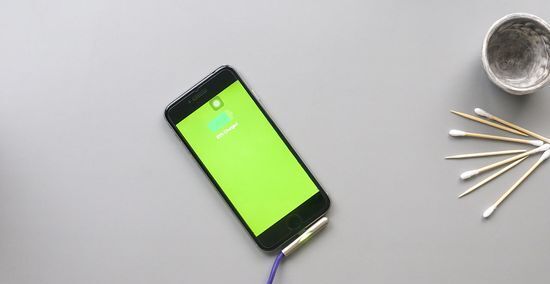
Attempt to charge the iPhone or iPad. If you were experiencing a charging issue related to a dirty port, you should be in good shape now. To prevent build-up from accumulating in your Lightning port in the future, avoid carrying your phone or tablet loose in a pocket or purse. If the phone or tablet isn't charging (or the charging process stops and starts randomly), try a different Lightning cable and/or power source. If cleaning the port and swapping cables doesn't solve the issue, contact Apple for repair. Visit https://support.apple.com/en-us/HT201232 to find Apple support phone number for your region.




















Comments
0 comment